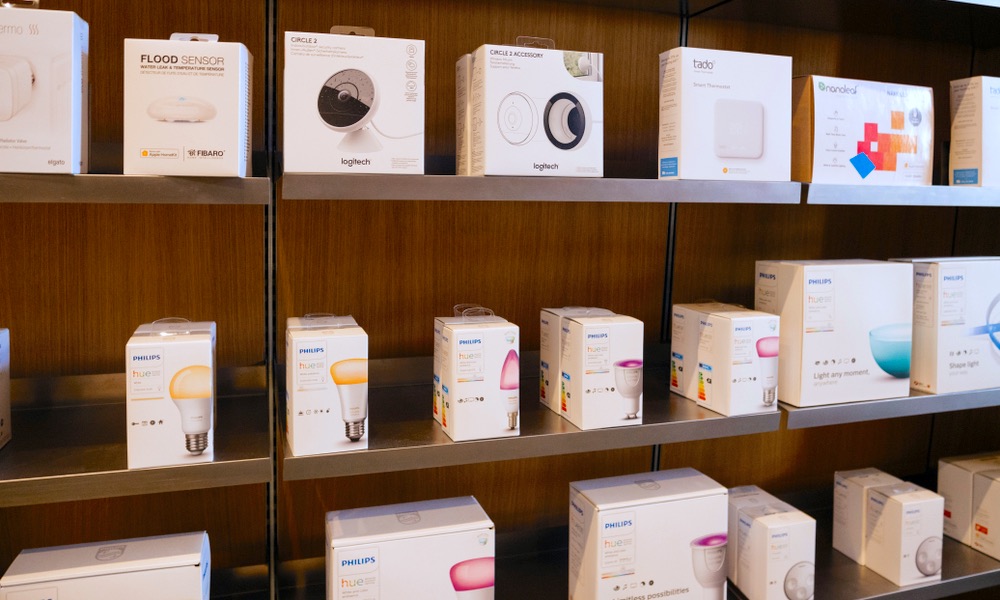Apple’s Homekit Platform Is about to Embrace a Wealth of New Accessories
 Credit: Hadrian / Shutterstock
Credit: Hadrian / Shutterstock
Toggle Dark Mode
In what may have once seemed like a pipe dream, a new alliance of the biggest players in the smart home industry is continuing to work toward providing a new open standard for home automation that could soon make smart home accessories compatible across all platforms, and it seems that not only does it have ambitious goals, but we could see the first results of this legendary collaboration by early next year.
Last December, Apple announced that it was joining the Project Connected Home over IP group, a new alliance made up of Amazon, Google, and the existing Zigbee Alliance (which includes just about every major smart home device manufacturer) that would work together to develop a new common standard for smart home automation.
The goal of the group was to create a cross-platform solution for smart home devices that would offer unparalleled security while also ensuring consumers wouldn’t have to worry about being locked in to any one platform or ecosystem, eliminating the “silos” that currently force many users to chose between Amazon Alexa, Google Home, or Apple HomeKit when purchasing accessories, and the very confusing mess of home automation standards that goes along with it.
At this year’s Worldwide Developers Conference, Apple took this a step further with the announcement that it’s open-sourcing HomeKit and continuing to work with industry leaders to create a common standard that could see a wealth of new accessories become accessible to the HomeKit ecosystem.
On Track for 2021
The good news is that it looks like the alliance has not only borne fruit, but could have a staggeringly long list of supported devices ready to go beginning next year.
In a new update shared by the Zigbee Alliance, the group is reporting that a draft specification for the new open, universal standard is expected to be published later this year, with the final standard expected to be ratified sometime in 2021.
The alliance also reports that it’s been growing in leaps and bounds, with the couple of dozen companies that first formed the group now having expanded to over 145 active members, with hundreds of product, engineering, and marketing experts working across 30 different teams.
Much More Than Just Lights
What’s most remarkable, however, is that the report also provides the first indication of what devices the standard is going to be working with, and it’s a hugely ambitious list that pretty much covers everything you could think of, from light bulbs and related lighting accessories, to thermostats and air conditioning units, to door locks, garage doors, security systems, window shades, and even televisions and routers.
As the technology stack comes into focus, so do the smart home devices that we are initially targeting, which include lighting and electrical (e.g., light bulbs, luminaires, controls, plugs, outlets), HVAC controls (e.g., thermostats, AC units), access control (e.g., door locks, garage doors), safety and security (e.g., sensors, detectors, security systems), window coverings/shades, TVs, access points, bridges and others.
Zigbee Alliance
The group also doesn’t plan to stop there, and notes that it’s already exploring the integration of “additional consumer electronics products.”
What This Means for You
Apple’s HomeKit is already the best overall home automation solution available, but it’s long been hampered by much more limited availability of accessories. Even though HomeKit is far more secure and offers much more sophisticated home automation capabilities than either Amazon’s Alexa or Google’s Home, many users have simply found it easier to buy into those other platforms due to the significantly larger number of devices available for them.
After all, Apple barely has 300 accessories that are directly supported by HomeKit, while Amazon boasts more than 12,000 Alexa-compatible devices, and even Google isn’t far behind that, with well over 5,000 different devices available. Plus, while HomeKit has a fairly narrow focus of device categories, Alexa supports everything from lights and door locks to refrigerators and coffee makers.
With this new open standard for home automation, however, all of those many thousands of devices will become much more readily available to HomeKit users. While it sounds like this compatibility won’t be automatic — the devices will need to be updated in some way for the new standard — it’s possible that this could come simply via software updates in some cases, but either way the new standard will be the way forward regardless of what platform a hardware manufacturer would otherwise choose to focus on.
This also means that users who would prefer to use multiple control platforms will be able to do so more seamlessly as well. For example, you might like setting up actual home automation routines in HomeKit, which is significantly better at this than the other platforms, but you might prefer to issue voice commands to Alexa on your TV or Echo speaker rather than to Siri on a HomePod. The new open standard will allow you to use each of these previously independent ecosystems interchangeably, giving you much more flexibility in the long run, and making it much easier to have a connected home without worrying about the need to buy into a single platform.






